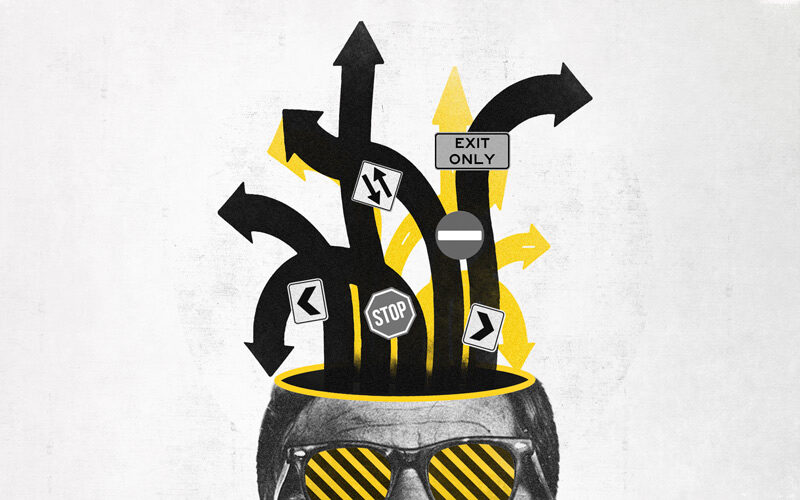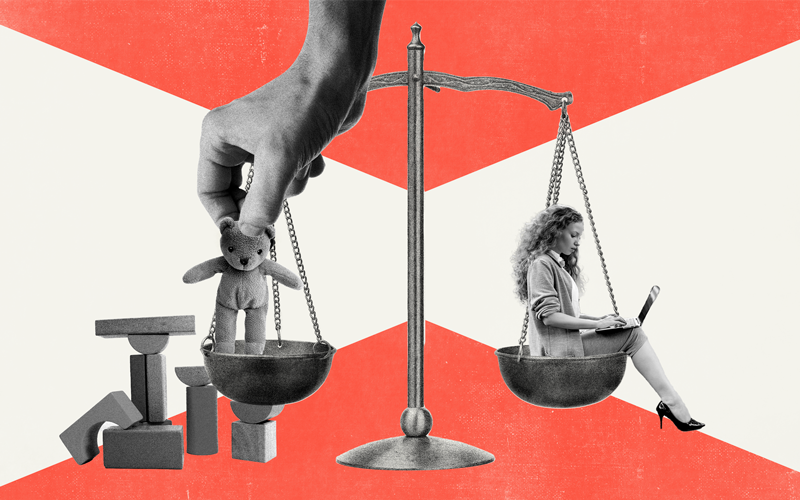Adaptability in The Before Times™ might have been getting used to a longer commute or a healthier diet. Now, it can mean a total departure from the status quo, and being okay doing it.
Adaptability is a skill, and as startup founders, it’s possibly the most precious one we can have.
What does it mean to adapt?
Former head of marketing for Google X and CMO for Obama’s United States Digital Service (USDS) Janine Gianfredi gives a nice definition for adaptability. “Adaptability is being told no and figuring out what’s next. It’s not just about beating your head against the wall. It’s asking why the wall is there. What’s it holding up?”
Founder, author, and speaker Dr. Tony Alessandra takes it a little further. He identifies two sub-definitions of adaptability: flexibility and versatility.
The first involves trusting your own judgement, being empathetic and tolerant of other perspectives, and being positive. This translates to open communication streams with those around you – key for making informed decisions and learning new things.
The second involves an ability to overcome setbacks and rejections, self-correct without ego, and know when to react or change course. In a way, it’s about toughness in the face of adversity (that’s the beating your head against a wall part).
How are you going to react when a complaint comes in, yet another investor meeting goes badly, or you lose a valued member of staff and have to retrain someone from scratch? It all comes down to your capacity for versatility.
Things are speeding up
If it seems like innovation is happening faster and faster, that’s because it is.
The right way now may not be the right way in five years. New technology like AI, AR, and ML is rapidly integrating into everyday systems. To view a technology as the status quo is to underestimate the rapid fluidity of the macro environment you’re operating in. Founders need to perpetually tweak and pivot to succeed.
Not to mention once more (sorry) how completely unrecognisable our professional landscapes are following COVID. Adaptability in itself has become a way of life.
In the face of the climate crisis (sorry again), that’s not going to change. We’re never going back to the good old days. Only the adaptable businesses will survive.
Adopting a challenge-oriented mindset
Fortunately for founders, adaptability can be trained like a muscle. Returning to Dr. Alessandra’s definition of flexibility, it involves developing and strengthening your relations with and to others. This opens a window into new perspectives and how you could do things better.
This goes hand in hand with asking for honest feedback and correcting your course based on it (otherwise known as checking yourself before you wreck yourself).
Start by:
Sorting the controllables from the uncontrollables. Otherwise known as letting fires burn, this can (ironically) help you avoid burnout.
Keeping the view long-term. A six month plan is easily shattered with a large, disruptive event. A much longer-term plan makes these events less daunting and easier to tackle. With a long view, in the words of Wilbur Labs founder David Kolodny: “Rough situations feel less threatening and more navigable… whatever disruption arrives next looks like a bump in the road instead of a collapsed bridge”.
Knowing that nothing is permanent. As VC Pedro Sorren says, “One channel that works today will not work tomorrow. The moment you think there is absolute truth in something is the moment it dies.”
The start, stop, continue model
This is all philosophical stuff to help shift your mindset. But there’s a more practical exercise you can do to train your adaptability muscles. Sit down with your team or cofounder (or just yourself). Draw three columns, and label them start, stop, and continue.
- In start, write down all the issues that need to be tackled (that don’t yet have solutions). Use this as a jumping off point for ideation and problem solving.
- The stop column is your opportunity to discuss what’s not working. Processes that should be eliminated, training that isn’t helpful, products that aren’t selling. Think like Marie Kondo and be brutal – the point is to eradicate drains on your time and money.
- The continue column is the happy column. Here everyone can report on what’s working. Can you take guidance or inspiration from well-functioning systems identified here?
This is the start stop continue model, and you can apply it to projects, people, financial goals, and product improvement. It’s a really simple way to evaluate progress and slough away the deadweight of unproductive systems.
An extension of this is the stop, start, continue, pivot model. You might use this one if you’re at a crossroads point in your startup’s journey.
- The pivot column is for things that are kind of working or could work, but need major overhaul or restrategizing. The fuller this column is, the more likely it is you need to pivot. Too many dysfunctional systems may have one big root cause. It might also be that the systems you have are not aligning with your macro environment.
You might then revisit the start, stop, continue model four to six months after your project or pivot, or as a good quarterly habit.
Minor adjustments or major adaptations?
Having a lot of items in your pivot list is one sign you need to make a seismic shift in your operations. But there will likely be some other major flags that don’t take a model to recognise.
- You’ve become a one trick pony. One thing you’re doing is working brilliantly. Everything else you’re doing is not working at all. Maybe you launched a successful product and then tried to expand your range. Maybe you had a good original product but future iterations are not as popular. This would look like a lot of items in your stop column. Time to decide whether to keep attempting expansion, or refocus your efforts on what you do well.
- You’re always behind the trends. This is where we come back to the accelerated innovation founders must now keep pace with. Being “behind” looks like marketing a product to offices when all their employees have gone remote. Or relying on 4G when all of your competitors are rolling out 6G. It might be that you don’t have the capability to adapt to the state of the art. Or it might be that you do, do but you don’t think it’s important (or affordable). Catching up might involve a pivot in your product, or in the systems that back it up.
- You’ve identified a new opportunity. Pivoting can be far from a negative thing. The trick is letting go of your original intention (and maybe a bit of your pride) and pursuing a brand new course that can deliver more sustainable growth. The other trick is getting your founding team on board – new concepts can be controversial, and there may be feelings of sunk cost fallacy to overcome.
Those who really struggle to adapt can invest in professional self-development or hire an executive coach.
If that’s not in your budget, develop an awareness of the cognitive biases that are guiding you (read Thinking Fast And Slow by Dr Daniel Kahneman, Nudge by Richard Thaler and Cass Sunstein, and our article on the subject. One of these won the Nobel prize – we’re not saying which one).
As a final reassurance, almost all founders will struggle with adaptability. In our natures to be laser focused and tenacious, we tend to stick our heads in the sand and refuse to recalibrate.
Fortunately or unfortunately depending on how you look at it, today’s business environment will mould you kicking and screaming into an adaptable person. It’s just about deconstructing those brick walls rather than beating your head against them.











